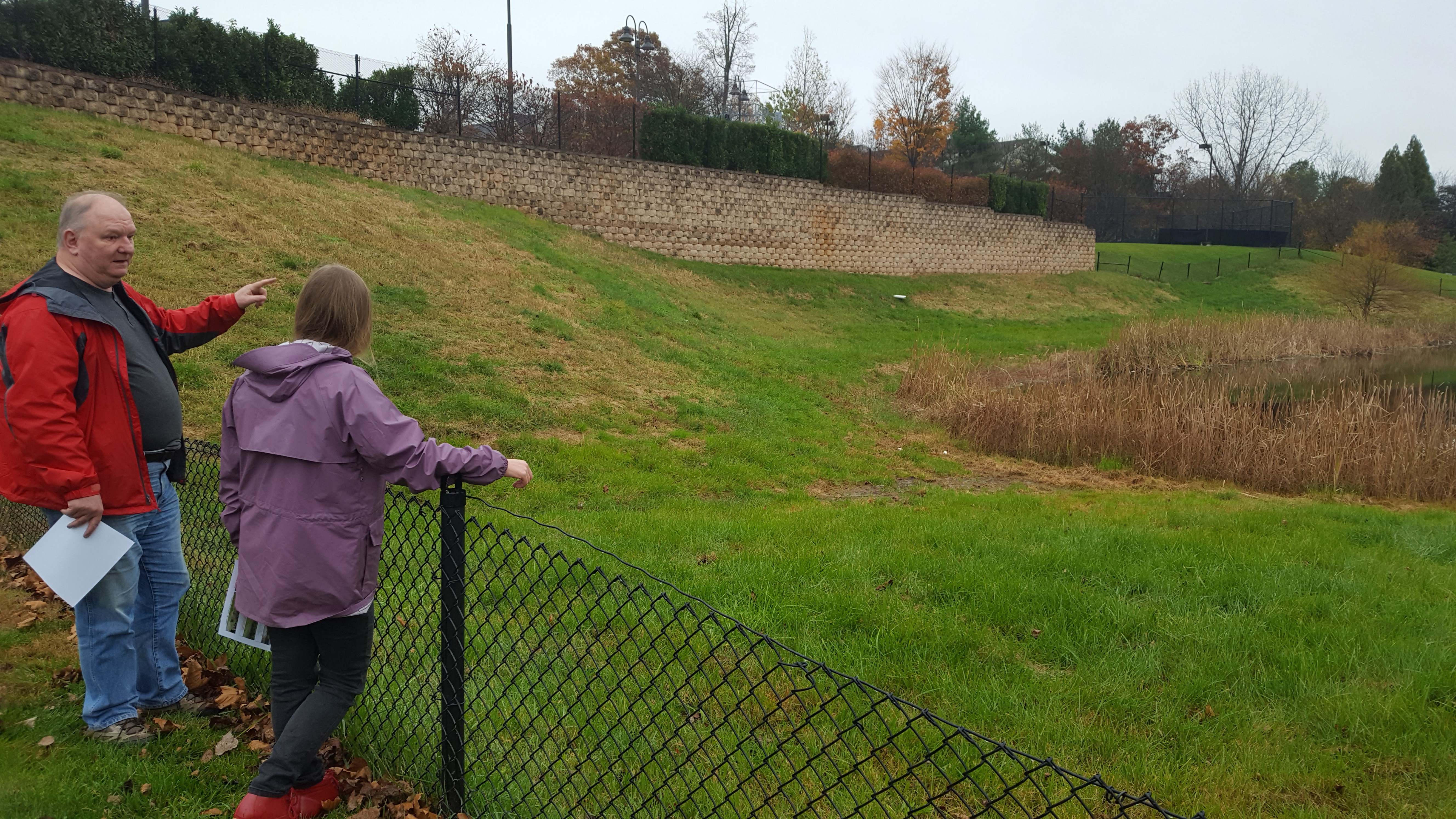
In November, Jennifer and I had the opportunity to take a storm water tour with Richard Klein, of Community and Environmental Defense Services. In off and on rain, we looked at the health of two different sections of streams and looked at two different storm water facilities.
We first went to a section of the Jones Falls, where it is one of the healthiest and most vibrant sections of stream in Maryland. We looked for macroinvertebrates in order to sample stream health. Macroinvertebrates are organisms without a spine that are big enough to be seen with the naked eye. Specifically, we were looking for evidence of caddisflies, a pollution sensitive macroinvertebrate (aka, bugs that need clean water to live). In this section, we found evidence of caddisflies on rocks pulled from the stream.
We then went to a section of stream that had undergone a stream restoration. This means that Baltimore County had done a project in the stream to restore it. Oftentimes this includes restoring a natural channel design, stabilizing banks, and removing sediment. At first glance, this section of stream looked just as pristine as the first. The water was clear and there were no signs of erosion. However, when we pulled rocks from the stream they were completely devoid of any signs of life. Looking at the stream itself, we could see no life underneath its rippling surface.
A healthy stream is more than just how it looks. The unseen pollution in the stream makes it inhospitable to macroinvertebrates and fish, and makes it unhealthy for humans to play in it. Upstream pollution, from storm water runoff in parking lots and yards and pollution from septic systems is an unseen problem in many of our suburban streams in Maryland.
A big issue is the lack of maintenance of storm water facilities (we can address the lack of maintenance of septic systems in a different post). Storm water facilities, like bioretention facilities (rain gardens) and infiltration basins need inspections and maintenance to make sure that they are working. Both types of installations are supposed to completely drain within 48 hours of rain. If maintained, both facilities are very effective at filtering storm water, especially the first inch of rain which is the most polluted (the first inch of rain carries pollutants from asphalt, like motor oil and deposited nitrogen). If not maintained, then they are not doing their job at protecting downstream water resources.
As we move forward, we need to hold local jurisdictions and the state of Maryland accountable for failing to inspect and maintain stormwater facilities that are supposed to keep our streams and rivers safe from upstream development.



